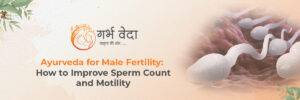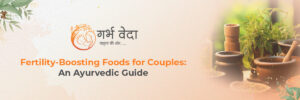Panchakarma, a cornerstone of Ayurvedic medicine, has been revered for centuries as a holistic approach to health and wellness. Derived from the Sanskrit words “Pancha” (five) and “Karma” (actions), Panchakarma refers to five therapeutic procedures aimed at detoxifying the body and restoring balance to the three doshas—Vata, Pitta, and Kapha. These procedures not only rejuvenate the body but also have a profound impact on fertility, making Panchakarma a significant intervention in Ayurvedic fertility treatments.
The Link Between Detoxification and Fertility
Fertility is intricately linked to the overall health of an individual. According to Ayurveda, reproductive health is a reflection of one’s overall health. Toxins (ama) accumulated in the body due to improper diet, lifestyle choices, and environmental factors can obstruct the natural processes of the body, leading to infertility. Panchakarma, by eliminating these toxins, rejuvenates the body, balances hormones, and creates an optimal environment for conception.
The Five Therapies of Panchakarma
Panchakarma consists of five major therapies: Vamana (emesis), Virechana (purgation), Basti (enema), Nasya (nasal administration), and Raktamokshana (bloodletting). Each therapy targets specific areas of the body and serves to cleanse, balance, and restore health.
Vamana (Therapeutic Emesis): This therapy involves inducing vomiting to eliminate toxins from the upper gastrointestinal tract. It is particularly effective in balancing the Kapha dosha, which, when aggravated, can lead to hormonal imbalances affecting fertility. Vamana also clears the respiratory tract and improves digestion, both of which are crucial for reproductive health.
Virechana (Therapeutic Purgation): Virechana is a controlled process of inducing bowel movements to cleanse the intestines and detoxify the body. It is primarily used to balance the Pitta dosha, which governs metabolism and digestion. By purging toxins from the digestive tract, Virechana helps in regulating the menstrual cycle and improving the quality of the reproductive tissues.
Basti (Therapeutic Enema): Basti is considered the most effective Panchakarma therapy for infertility. It involves the introduction of medicated oils or decoctions into the rectum to cleanse the colon and balance the Vata dosha. Vata is responsible for the movement of bodily functions, including the movement of sperm and egg. By balancing Vata, Basti helps in enhancing the quality of the reproductive fluids, reducing stress, and improving the chances of conception.
Nasya (Nasal Administration): Nasya involves the administration of medicated oils or powders through the nostrils. This therapy is beneficial for balancing the Kapha and Vata doshas in the head and neck region. Nasya is known to improve hormonal balance, clear sinus congestion, and enhance the function of the hypothalamus and pituitary gland, which play a crucial role in regulating reproductive hormones.
Raktamokshana (Bloodletting): Although not as commonly used as the other therapies, Raktamokshana is an effective method for detoxifying the blood and balancing the Pitta dosha. By removing toxins from the bloodstream, Raktamokshana helps in purifying the reproductive system and improving overall fertility.
The Role of Panchakarma in Male and Female Fertility
Panchakarma can be tailored to address specific fertility issues in both men and women. For women, Panchakarma therapies help in regulating the menstrual cycle, improving the quality of the ovum, and preparing the body for conception. For men, Panchakarma can enhance sperm quality, increase sperm count, and address issues like erectile dysfunction and low libido.
Female Fertility: In women, Panchakarma therapies like Virechana and Basti are particularly beneficial. Virechana helps in detoxifying the reproductive organs, regulating the menstrual cycle, and balancing hormones. Basti, on the other hand, nourishes the reproductive tissues, enhances the quality of the ovum, and prepares the uterus for implantation. Additionally, Nasya therapy helps in balancing hormones by stimulating the hypothalamus and pituitary gland, which are crucial for reproductive health.
Male Fertility: Panchakarma therapies play a significant role in improving male fertility by detoxifying the body and enhancing the quality of sperm. Basti therapy is especially effective in improving sperm count and motility by balancing the Vata dosha, which governs the movement of sperm. Virechana helps in detoxifying the reproductive system and improving the quality of the reproductive tissues. Nasya therapy can also help in balancing hormones and improving overall reproductive health.
The Preparatory and Post-Therapeutic Phases
Panchakarma is not just about the five main therapies. It also involves preparatory and post-therapeutic phases that are crucial for the success of the treatment.
Purvakarma (Preparatory Phase): Before undergoing Panchakarma, the body needs to be prepared to receive the therapies. This phase includes Snehana (internal and external oleation) and Swedana (fomentation). Snehana involves the application of medicated oils to the body to loosen toxins, while Swedana involves inducing sweating to further liquefy the toxins and prepare the body for detoxification. This preparatory phase ensures that the body is in an optimal state to undergo the detoxification process.
Paschatkarma (Post-Therapeutic Phase): After the main Panchakarma therapies, the body undergoes a period of rejuvenation and restoration. This phase involves specific dietary and lifestyle recommendations to help the body regain strength and vitality. Special herbal formulations are often prescribed to nourish the reproductive tissues and enhance fertility. Following the guidelines of Paschatkarma is essential to ensure that the benefits of Panchakarma are sustained.
Panchakarma and Modern Fertility Treatments
In recent years, there has been a growing interest in integrating Panchakarma with modern fertility treatments like in vitro fertilization (IVF) and intrauterine insemination (IUI). Panchakarma can be used as a complementary therapy to enhance the success rates of these treatments. By detoxifying the body and balancing the doshas, Panchakarma creates a more conducive environment for conception, thus improving the outcomes of assisted reproductive technologies.
Conclusion
Panchakarma offers a holistic approach to fertility by addressing the root causes of infertility and creating a balanced, toxin-free environment in the body. Its emphasis on detoxification, dosha balance, and rejuvenation makes it a powerful tool for enhancing reproductive health in both men and women. Whether used alone or in conjunction with modern fertility treatments, Panchakarma has the potential to significantly improve the chances of conception and support a healthy pregnancy.
In a world where infertility is becoming increasingly common, the ancient wisdom of Panchakarma provides a natural and effective solution to restoring fertility and promoting overall well-being. Garbhveda, recognized as one of the best infertility centers, integrates these time-honored practices with modern reproductive health care. By embracing this holistic approach at Garbhveda, individuals can take a proactive step towards achieving their dream of parenthood while also nurturing their overall health.










